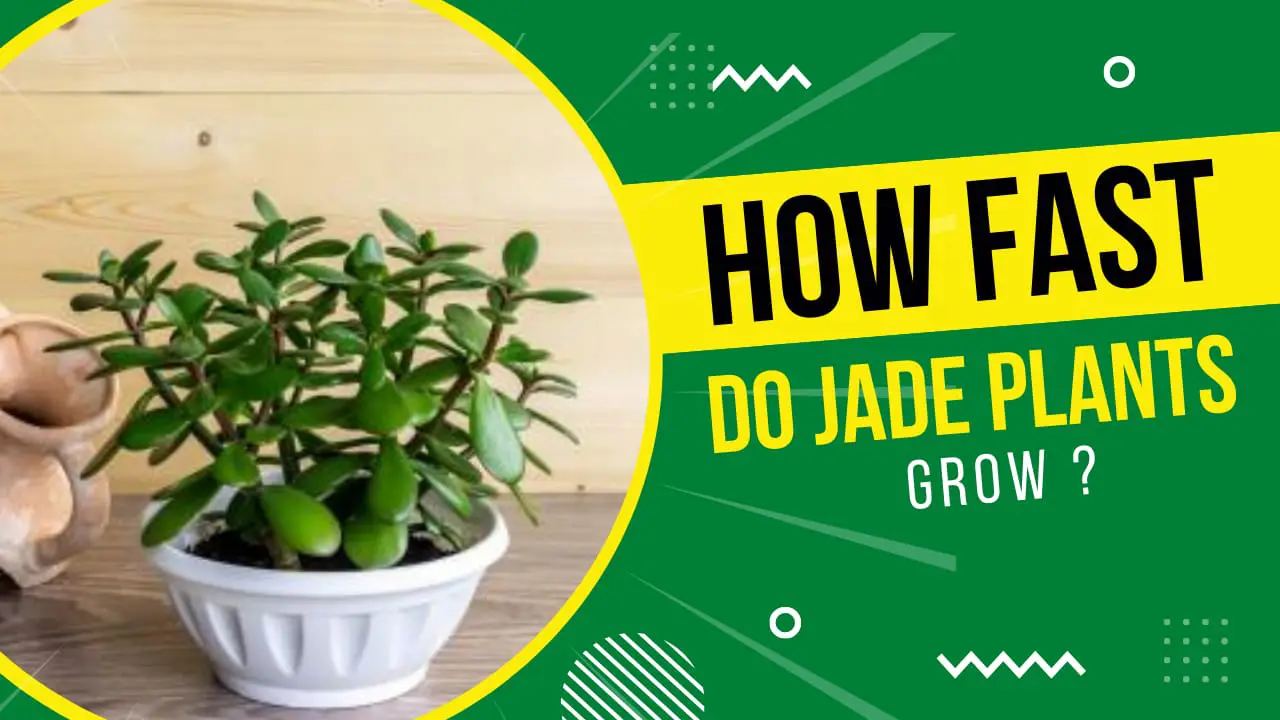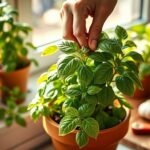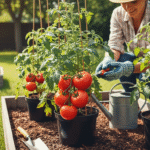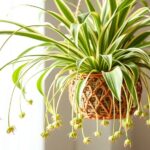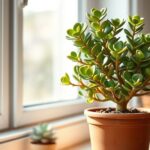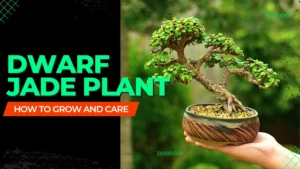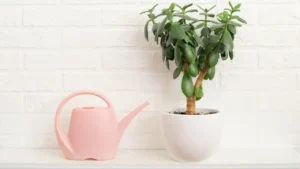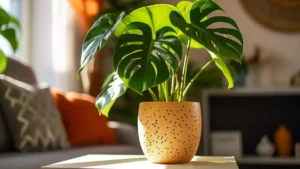Jade plants are very popular all over the world because they are easy to care for and are very hardy. The jade plant can grow to be between 3 and 6 feet tall with a little amount of care and is originally believed to bring its owner good fortune. But the most common question that we keep getting on our websites is, how fast do jade plants grow and how much time does it need to grow large?
So, in this article, we will first examine how large a jade plant can grow and how fast it can grow. We will explore the problems that can pause your jade plant’s growth and the booster solutions that will increase the growth fast in a short time. So, let’s begin!
Table of Contents
Reasons For The Slow Growth Rate Of The Jade Plants
Do you want to know the reasons behind the slow growth rate of your jade plants? Not to worry, we will now discuss these issues, and then explore the solutions to fix them. So, check out the reasons given below:
1. Lack of Light in jade plants
The amount of light a plant receives has a big impact on its growth and development. If the plant doesn’t receive enough light, it will gradually lose its color and wither away. Similarly, jade plants, which benefit from bright indirect light, tend to lose color and wither away. They need at least 4 to 6 hours of direct sunlight each day. Lack of sunshine can affect the growth of jade plants in numerous ways.
The most obvious sign of low light levels in the jade plant is the leggy development. As a result, fresh stems develop that have wider gaps between their smaller, weaker leaves and grow longer and thinner which, as a result, hampers the growth of your jade plant.
2. Overfertilization in jade plants
Fertilization is important for the jade plants but if done in excess, then it can hinder the growth rate of the jade plants. Even though it might seem odd, giving your jade plant too much fertilizer can be harmful. Your jade plant may become overfed with chemicals from over-fertilizing, which will further result in mushy leaves. If there are areas of soil that resemble white salt, that means there is too much fertilizer chemical buildup.
3. Overwatering in jade plants
The most fundamental requirement of plants is water. The plant cannot survive and flourish as it should if there is no water available. The plant will eventually droop and wilt away if you don’t give it enough water. You must ensure that the plant gets the right amount of water each day because sometimes, the plant can be harmed by overwatering or underwater and this, in turn, slows down the growth rate.
Overwatering is the main reason why most jade plants die. The roots get damaged and rotted by too much water in the soil, and this slows down the rate of growth. You can identify overwatering in your plant by noticing if the leaves seem yellow or feel mushy. Excess water also makes the soil damp, which further serves as an invitation to fungus and pests. Overwatering decreases the development of jade plants.
4. Pests and Diseases occurring to jade plants
Although jade is usually not vulnerable to pests and diseases, there is still a possibility that it will be affected by them if proper care is not given. Hardy jade plants have thick, meaty leaves that rarely ever draw parasites to the plants. Pests including aphids, scales, mealybugs, and spider mites are some of the common insects that attack jade plants.
These pests and diseases can lower the growth rate of jade plants. They consume the rich sap that normally sustains the plant. Search for deposits that resemble webs above or below the leaves to see if your plant has any insect attack. Take proper measures to safeguard your jade plant from any infections so it does not hinder its growth.
How To Make The Jade Plants Grow Fast?
The jade plant usually has a slow growth rate. Hence, some plant owners want to hasten the speed of their growth rather than wait. So to boost the plant growth, we have mentioned below some pointers that can be taken into consideration to increase the jade plant’s growth rate!
1. The ideal temperature required for jade plants
Ensure that the plant is kept in a location that has a suitable temperature for it. Like for the jade plants, the ideal temperature around them should be 12 to 23 degrees Celsius. During winters, the plant should be placed indoors as the temperature drops, which is not healthy for the plant. And in summers place it outdoors, so it stays in a warmer temperature.
Temperature plays an important role in the development of jade plants. Proper amenities and the environment will boost the growth of the plant drastically. You have to give the plant enough care and attention that it needs to grow healthily.
2. Sunlight requirements for jade plants
This is one of the most essential needs of plants. Sunlight is required for every plant to perform the process of photosynthesis. Light helps the plant to prepare its food, which they need to grow thoroughly every day. Every plant needs different amounts of sunlight according to its surroundings and necessity.
Jade plants need bright indirect sunlight for at least 4 to 6 hours daily. They can take direct sunlight only in the morning when the light is not too extreme. Placing the plant in a good location with the appropriate amount of sunlight will not only provide the plant with nourishment but also boost its plant growth.
But remember that excess amounts of sunlight can also be very dangerous for the jade plants as it can result in the leaves drying up quickly and gradually withering away. So to avoid this kind of situation, give a limited supply of sunlight to the jade plants.
3. Fertilization requirements for jade plants
Fertilization is something that every indoor plant owner needs. Fertilizers provide the plant with nutrients and minerals that regular soil cannot. Plants that are placed outdoors do not need much fertilization as the soil already contains the needed minerals, but if you are placing them indoors, you must have a limited supply of nutrients resulting in adding fertilizer as a booster for faster development.
The fertilizer also has an impact on how quickly jade plants develop. You should only fertilize a jade plant during the growing season during the early spring, the summer, and the beginning of the fall. Fertilizer is not required in the winters and the fall because it won’t grow and may even be detrimental.
Fertilize the jade plant once every two to three months during the growing season. You can use a water-soluble, balanced fertilizer for houseplants that are applied at half the suggested strength. There are many effective ways for fertilizing houseplants.
4. Potting soil mixture requirements for jade plants
A perfect potting soil mixture needed for a plant is vital for faster growth as more nutrients are needed for the plant to become nourished and developed. Your best chance when selecting a mixture to house your jade plant is a blend made of the loose, well-draining medium. To avoid too much moisture gathering and to discourage fungal growth, the soil should ideally have a neutral to slightly acidic pH level between 6 to 7 and should drain effectively.
Use some perlite to help with drainage if you decide to use an all-purpose potting mix instead. To wick away excess moisture from the soil, you can also place your jade plant in a terracotta or clay container. These are some mixtures that effectively work in the growth rate of the jade plants.
5. Suitable Container requirements for jade plants
A container also plays a vital role in the growth of the plant. Larger the pot, the more space to grow freely. A good jade plant pot should be able to wick away excess moisture and keep the plant snug. The finest pairings are terracotta or clay pots and saucers since these materials promote moisture evaporation.
Don’t give jade plants a big pot because they prefer to be slightly root-bound. For the majority of specimens, around an inch or two of space around the rootball is good.
6. Repotting the jade plants properly
Since bonsai trees are long-lived plants that can withstand longer periods, they do not frequently need to be replanted. To ensure the plant’s safety and needs, you must be aware of it, show it care, and check on it frequently. The jade plants can be repotted every 2 to 3 years for faster growth. Also, remember that these plants are slow growing and are prone to root rot due to their growth rate.
The bonsai plant grows better and more quickly after repotting. One of the main goals of repotting is to replace the soil because it eventually becomes depleted of all nutrients. Repotting is done as a result to give the plant the necessary minerals. The removal of root rots is another factor. To limit their growth, the roots must be partially chopped down. Heavy root pruning should be avoided because it could cause shock to the plant.
Propagating A Jade Plant For A Faster Growth
For boosting the growth of the jade plants, you can simply propagate them. To grow new plants from a single leaf or cutting taken from a mother plant gives you the chance to quickly and easily expand your collection. The summer months are ideal for jade plant propagation since they are more likely to receive enough sunlight and humidity.
But, the most important question is how to propagate a jade plant. That is why we will now discuss some of the steps that you must follow to propagate jade plants healthily!
Step 1: First, start by making a cutting that is two to three inches long at the very least. It should be harvested from a disease-free, mature plant that is in good health. Leave the cutting in a warm, dry place for a few days to let the end of the cutting dry out.
Step 2: Create a long, narrow hole in the center of a small pot and fill it with succulent soil. Apply rooting hormone to the lowest inch of the chapped stem to promote faster root growth. Put the stem into the container gently, then fill up the soil completely so that the cutting may stand up on its own.
Step 3: After three or four weeks, keep the cutting out of direct sunlight. Move the plant gradually towards a window with direct sunlight after new growth begins to show. Use only a little water at this time to make the potting mixture moist. In a few weeks, the roots start to grow, at which point you can start to treat it like a regular jade plant.
Conclusion
Jade plants grow slowly like fine wine, and you have to be patient and give them enough attention and care every day. We hope our article provides you with all the information you need to increase the growth of your jade plants.
If we missed giving any more reasons in the above list, please comment down below and if you like this article, don’t forget to share it with your friends and family!
I hope the information above was useful to you and cleared all your concerns regarding the development of the jade plants. Your jade plants will benefit immensely if you incorporate these suggestions while developing them. You can determine exactly what your plant wants and needs as it grows by using the above guidelines.
FAQs
Q1. How long do jade plants live?
They have an average lifespan of 70 to 100 years, which gives them plenty of time to develop into remarkable specimens. Obviously, the lifespan depends on the care that the jade plant receives. Naturally, if you offer the plant the proper care and attention with a suitable environment, it will live longer. However, because it requires little care, you may anticipate your jade to live for a very long time.
Even if the jade plant can live up to such a long time, do not expect it to grow overnight. You have to be patient and attentive while caring for the jade plants.
Q2. How much time does it take for the jade plant to grow big?
Jade plants do not grow quickly. Only with providing proper care and attention, you can expect your jade plant to reach several feet tall within ten years. To maintain a compact growth habit, which frequently appears more attractive than tall and thin jade, many individuals choose to prune their jade plants.
Of course, starting with a bigger plant is the alternative. Although a larger plant will cost more, it can be a good choice if you want to get a larger jade more rapidly.
Q3. Are jade plants slow-growing?
Yes, jade plants are slow-growing in nature, but their growth can be boosted if you follow the tips we have mentioned in this article. These plants will only grow a maximum of two to three inches each year.
Q4. How do you identify if the jade plant is happy?
Jade plants that are content have meaty, solid green leaves that don’t feel floppy. The borders of the leaf may appear crimson, but that is typical. It’s simply means that the plant receives enough sunlight.

